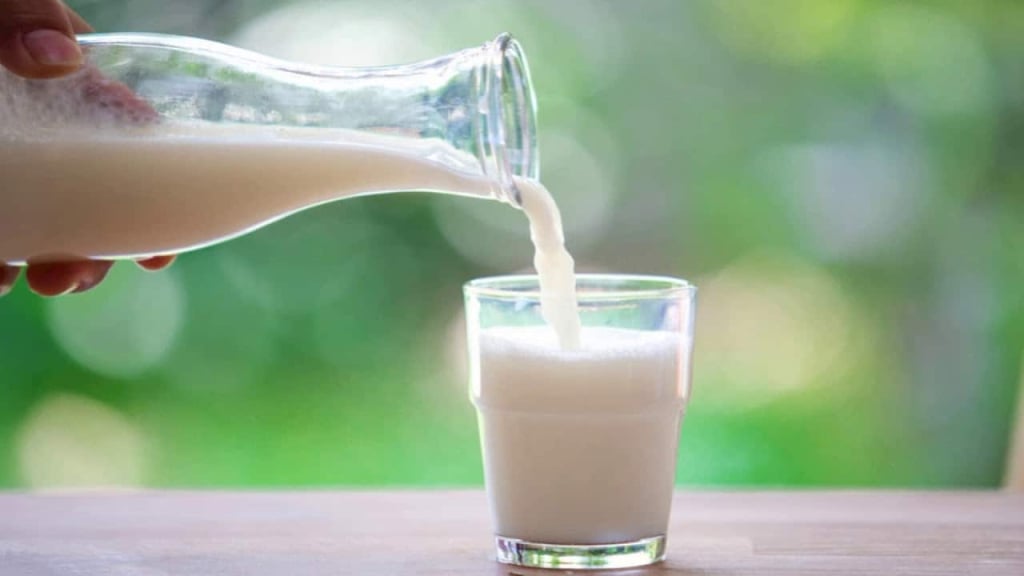Cow's Milk vs Soy Milk, Which Is More Nutritious?
Each type of milk has advantages and disadvantages, depending on your diet, taste, health, and of course your nutritional needs. Likewise with cow’s milk and soy milk.
In order to determine which one is superior, you need to look at and compare the nutritional content of the two first.
As the most commonly consumed type of milk, cow’s milk is synonymous with various nutritional content. However, the nutrients in cow’s milk are actually also contained in alternative milk made from soy. If so, which of these two types of milk is richer in nutrient content?
Nutritional comparison of cow’s milk and soy milk

Cow’s milk is the result of direct production from animals so that the nutritional composition is complex and contains every type of nutrient that the body needs. On the other hand, soy milk contains various plant nutrients with various health benefits.
Here are the differences in nutrition for cow’s milk and soy milk based on the amount and type.
1. Energy
Milk is one of the best sources of energy for the body. The energy in cow’s milk and soy comes from the content of protein, carbohydrates and fat. The exception is skim milk which contains almost no fat at all.
A glass of cow’s milk whole milk(244 mL) contains about 146 kcal of energy. Low calorie cow’s milk contains 102 kcal of energy. Meanwhile, skim milk with the least fat content only gives your body 83 kcal of energy.
The calories in soy milk are lower than animal milk. A glass of soy milk (200 mL) contains 80-100 kcal of energy so it is suitable for those of you who are losing weight.
2. Carbohydrates
Cow’s milk contains different amounts of carbohydrates depending on the type. A glass of pure milk (whole milk)contains 11 grams of carbohydrates. While low-fat milk and skim milk contain higher carbohydrates, which is 12 grams.
Soy milk has less carbohydrates than cow’s milk. The reason is, this product does not have lactose, which is a carbohydrate in cow’s milk. A glass of soy milk contains 8 grams of carbohydrates, but the carbohydrates in soy milk with added sugar are usually higher.
3. Protein

Protein is one of the most abundant nutrients in milk. A glass of whole milk contains 7.9 grams of protein, 8.2 grams of low-fat milk, and skim milk contains almost 8.3 grams of protein. This amount can meet 11-15 percent of your daily protein needs.
No less than cow’s milk, unsweetened soy milk contains 7 grams of protein. Vegetable protein from soy milk is also very beneficial for heart health and blood circulation, as reported from Cleveland Clinic.
4. Fat and cholesterol
A glass of whole milk contains 7.9 grams of fat. Meanwhile, the fat content in low-fat milk is less than 3 grams. If you are looking for the least fat milk, skim milk which contains 0.2 grams of fat is sure to be the winner.
Soy milk also contains fat like cow’s milk. However, the fat in soy milk is fairly low, which is about 4 grams. This drink also has no cholesterol and contains only a small amount of saturated fat so it is good for the heart.
5. Minerals
Cow’s milk contains a wide variety of vitamins and minerals, but which is contained in large amounts, including vitamin B2, vitamin B12, calcium and phosphorus. Cow’s milk is sometimes fortified with vitamin D to meet daily vitamin needs.
Soy milk also contains vitamin B complex, calcium, and phosphorus, but in smaller amounts. Therefore, these products often need to be enriched with vitamins and minerals that naturally occur in cow’s milk.
Which is more nutritious, cow’s milk or soy milk?

Soy milk is often used as an alternative to cow’s milk. This is not without reason, because the nutritional content of these two drinks is arguably quite equal. In order to choose which one is superior, you need to adapt it to your needs.
Cow’s milk is superior in protein, fat, and various vitamins and minerals. Cow’s milk is suitable for children during growth and development and is an excellent source of nutrition for adults.
However, cow’s milk contains saturated fat and cholesterol. People who are allergic to cow’s milk protein or have lactose intolerance also cannot consume it.
You need to be more careful in choosing the type of cow’s milk or replacing it with alternative milk.
Soy milk contains fewer calories and is high in protein for a plant-based product. Many soy milk products are now fortified with vitamins A, B, D, and minerals. This drink also does not contain saturated fat and cholesterol.
In addition, soy milk is also rich in antioxidants, phytoestrogens, and similar compounds that are only found in vegetable products.
The compounds in soy milk are able to protect body cells from free radical damage, maintain bone and brain health, and help reduce cancer risk.
After looking at the comparison between cow’s milk and soy milk, it turns out that both of them have equally good nutritional content. Choose the type of milk that suits your daily needs.
Hello Health Group does not provide medical advice, diagnosis or treatment.